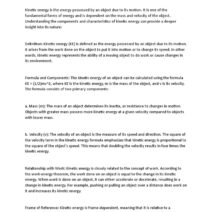Water vapor plays a pivotal role in shaping our climate, often overshadowed by carbon dioxide and methane in discussions on global warming. Despite its ubiquitous presence in the atmosphere, water vapor remains an unsung hero—or perhaps, an unsung amplifier—in the grand narrative of climate change. This essay will delve into the multifaceted roles water vapor plays in the Earth’s climate system, the mechanics of its amplification effects, and its implications in the context of anthropogenic climate change.
First, it is essential to understand the fundamental characteristics of water vapor. Unlike its more well-known counterparts, such as carbon dioxide and methane, water vapor is a naturally occurring greenhouse gas formed through the evaporation of water from oceans, lakes, and rivers. It constitutes approximately 60% to 70% of the total greenhouse effect. This considerable percentage underscores the importance of water vapor in climate dynamics. However, its concentration in the atmosphere is not directly influenced by human activities; instead, it is inherently tied to temperature. As temperatures rise, the atmosphere can hold more water vapor, leading to a cascade of effects that exacerbate warming.
The interaction between temperature and humidity can be articulated through the Clausius-Clapeyron relation, which elucidates how the potency of water vapor as a greenhouse gas rises exponentially with increases in temperature. A 1°C increase in temperature can lead to a 7% increase in the atmosphere’s capacity to hold water vapor. This exponential relationship forms the crux of why water vapor is often considered a feedback mechanism rather than a forcing agent. While human activities predominantly influence the concentrations of carbon dioxide and methane, which function as climate forcings, water vapor acts in a reactive capacity to these changes, amplifying the effects of warming initiated by the former gases.
Upon examining the feedback loop facilitated by water vapor, it becomes evident that disconnects in our comprehension can have substantial ramifications for climate projections. When the Earth experiences warming due to elevated levels of anthropogenic greenhouse gases, this newfound heat drives an increase in evaporation rates, elevating atmospheric water vapor concentrations. The ensuing higher humidity levels enhance the greenhouse effect, trapping even more heat within the atmosphere. Thus, a cycle emerges, where initial warming leads to increased water vapor, which in turn leads to further warming—a self-reinforcing phenomenon that eludes simple linear modeling.
Furthermore, water vapor’s role extends beyond merely amplifying temperatures; it has profound interactions with cloud formation and precipitation patterns. Clouds are, after all, composed of tiny droplets of water or ice that reflect sunlight and have a significant influence on the Earth’s energy balance. The stratus clouds often create a cooling effect, while cirrus clouds, primarily found at high altitudes, tend to have a warming effect due to their heat-trapping capability. The variability of cloud types introduces another layer of complexity in predicting future climate scenarios, especially as climate models strive to simulate these interactions accurately. Misestimations in cloud feedback can lead to significant errors in climate sensitivity predictions.
In tandem with these mechanisms, the implications of rising water vapor concentrations extend into realms such as extreme weather phenomena. As global temperatures rise, climate scientists have observed an uptick in extreme weather events, including torrential rains, hurricanes, and heatwaves, all attributed to the increasing availability of moisture in the atmosphere. When climatic systems that depend upon the intricate balance of temperature and humidity are destabilized, the fallout can be catastrophic, leading to flooding, droughts, and other weather extremes that challenge infrastructure and ecosystems alike.
Moreover, the socio-economic facets of water vapor dynamics must not be overlooked. Regions that historically rely on predictable weather patterns are experiencing altered precipitation regimes, prompting uncertainties concerning agriculture, water supply, and natural resource management. As crops fail due to unexpected droughts or floods, food security becomes an eminent concern. Additionally, addressing the interplay of water vapor with climate change raises ethical questions about responsibility and resilience. Communities that have disproportionately contributed to greenhouse gas emissions may find themselves least equipped to adapt to the changes induced by increased water vapor.
The scientific community pursues innovative methodologies to study water vapor’s intricacies, including remote sensing technology and advanced climate modeling. Satellite measurements enable real-time tracking of water vapor concentrations across vast areas, filling critical gaps in our understanding of its spatial distribution. Despite advancements, significant uncertainties remain in accurately predicting feedback mechanisms involving water vapor. As contemporary climate models improve, integrating robust simulations of water vapor feedback will become essential for reliable forecasting.
In conclusion, water vapor, though often underappreciated, plays a crucial role in amplifying the effects of climate change. Its complex feedback mechanisms, interactions with cloud systems, and consequential impact on extreme weather ultimately highlight the critical nature of this greenhouse gas in shaping climate dynamics. As awareness grows regarding the significance of water vapor, interdisciplinary approaches that consider its multifaceted interactions may yield comprehensive strategies for mitigating the adverse effects of climate change. Acknowledging water vapor as an amplifier rather than a simplistic component of the greenhouse gas ensemble invites a more diligent pursuit of solutions that address the profound implications of our warming planet.





